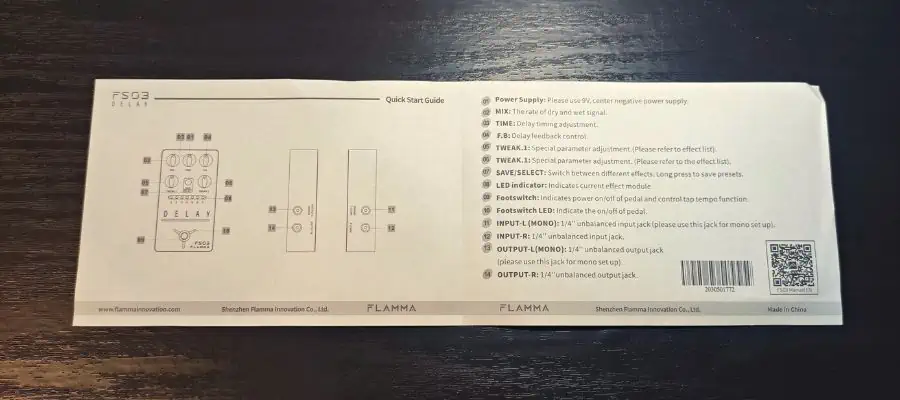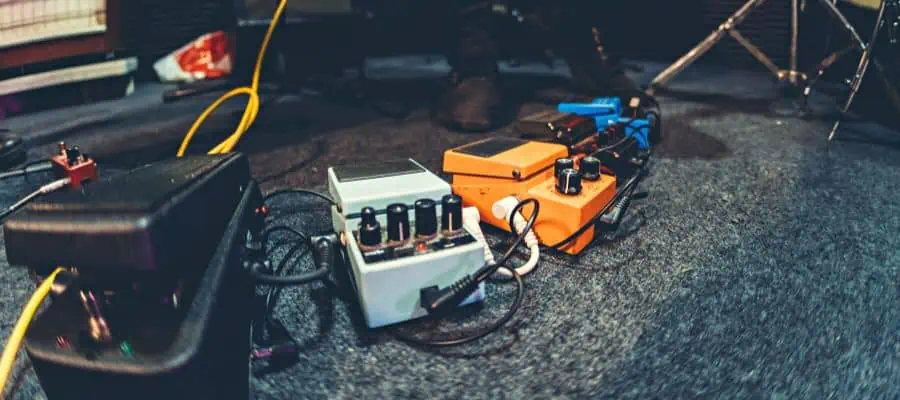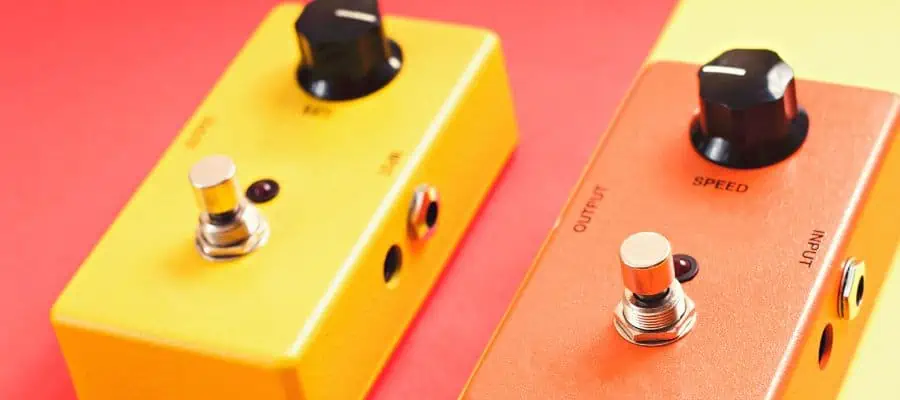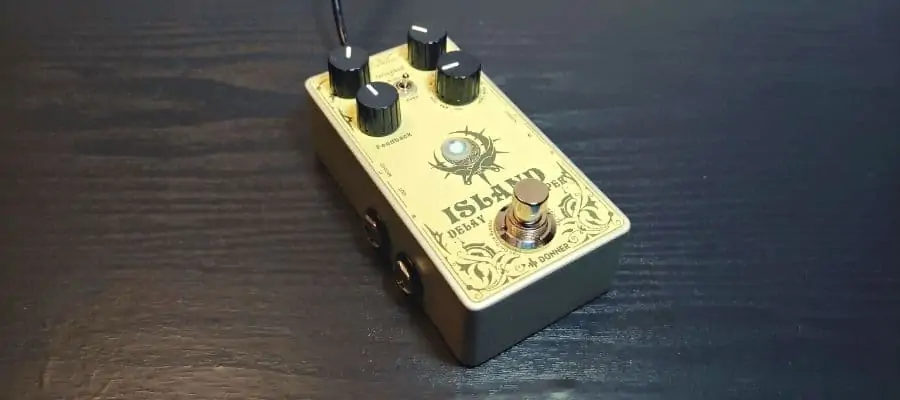Buffered guitar pedals use an electronic circuit (buffer) to isolate the guitar’s output signal from the subsequent pedal or amplifier, thus, helping prevent signal loss. If you’re wondering whether your setup is currently benefiting from a buffered pedal, there are several approaches you can try to figure out if that’s actually the case.
To tell if your guitar pedal is buffered, you can check the manufacturer’s manual, listen for subtle tone changes, test the equipment with a long cable, use a multimeter, search for a buffer switch, or disconnect the power and check the signal.
If you want to learn more about each of these methods, make sure to read on. Below, I’ll cover the ins and outs of each, so you’re sure to find at least one method that’ll put your doubts to rest.
1. Check the Manufacturer’s Manual

As with anything in life, I recommend considering the easiest, least time-consuming options first and then moving on to other alternatives. If you happen to still have the owner’s manual on hand, chances are all of your questions can be answered by what’s in there.
Most pedal manufacturers will specify whether their equipment is buffered or true bypass. If they don’t mention anything about that in their manuals, you can always head over to their website instead and check for your specific model there.
Even if the website doesn’t give you any additional info, a quick Google search on your specific pedal model followed by “buffered or true bypass” will give you the answer you’re looking for.
2. Listen for a Tone Change

On the off-chance you don’t find your answer after that first step, you’ll have to rely on a more “old-school” approach.
A buffered pedal often has an impact on the tone of your guitar, making it brighter and clearer. Whether that’s a good or bad thing – that’s up to personal preference. However, this feature can help you determine whether your pedal is actually buffered or not.
Play your guitar without engaging the pedal, take note of its tone, and then engage the pedal to hear for any slight tone changes. If you notice any of those, chances are your equipment is buffered.
3. Test the Pedal With a Long Cable

As I briefly mentioned above, the goal of a buffered guitar pedal is to maintain your guitar’s signal strength even over long cable runs. So, a good test would be to connect the pedal to the guitar using a long cable and check if there’s a notable loss in volume or tone.
If there is, that means that your pedal is likely a true bypass. On the other hand, if the tone and volume remain clear and strong, you might have a buffered pedal on hand.
4. Use a Multimeter

Though this approach requires the use of special equipment, the good news is that many people have easy access to multimeters, and thus, are able to put this question to rest without having to rely on their ear catching minuscule tone changes.
Using a multimeter, you can test the impedance of the input and output jacks on your pedal. A buffered pedal typically has a high input impedance (~1 megohm) and a low input impedance (< 1 kilohm). If you measure these or similar values on your multimeter, that means that your pedal is buffered.
5. Look for a Buffer Switch

If all that seems too complex and time consuming, you can revert back to a simpler approach and simply check whether your pedal has a buffer switch. Some models have this feature that allows the user to toggle the buffering on or off.
Again, you can either look for the switch the old-fashioned way (by inspecting the pedal from all sides) or consult the owner’s manual to see if you get any instructions there. If you do find one of these switches, that means your pedal is buffered.
However, though easy, this isn’t a fool-proof approach, as not all buffered pedals come equipped with a switch. Still, if you’re at your wit’s end, it’s worth a try.
6. Disconnect the Power and Check the Signal

Last but certainly not least, you can try disconnecting the power and checking the signal. If the pedal still transmits some form of signal even after being disconnected from its power source, that means that it’s a true bypass and that there’s no buffer in sight.
That’s because buffers require an electric current; otherwise, they don’t operate at all. As a result, when disconnected from their power source, they won’t transmit any signal, and you won’t be able to listen to anything through your amplifier.
On the flip side, true bypass pedals connect your guitar directly to the amplifier, “bypassing” any effect that the circuits could have, so you can still hear what you’re playing even if they’re disconnected from their power source.
Buffered vs. True Bypass Pedals
If you’ve made it thus far, you’ve probably noticed that there are pros and cons to both true bypass and buffered pedals, and there’s no one-size-fits-all answer as to whether one is inherently better than the other.
For example, while true bypasses offer the significant advantage outlined above, they’re also notorious for switching noise as well as having the signal lose some of its power over longer distances.
Buffered pedals, on the other hand, can transmit the signal through long distances with far less noise; however, they also alter the tone of your guitar, as it’s no longer directly connected to the amp.
The decision between the two is ultimately a personal one, and you’ll have to take into account your own preferences and playing style to figure out which option will serve you best.
Conclusion
Buffered guitar pedals are often used to isolate the guitar’s output signal from the subsequent pedal or amplifier, and as such, they can help prevent signal loss and maintain the guitar’s tone.
You can easily tell whether your pedal is buffered by checking the user manual, listening for a tone change, looking for a buffer switch, or using a multimeter. These are just a few of the testing approaches you can take – ultimately, the best way to find the right pedal for your setup is to trust your intuition and musical ear.
If you found this article useful, you may want to save this pin below to your Guitar board.

Recent Posts
Some guitarists insist on buying an expensive amplifier with their electric guitar. They assume that this is a must for every type of guitarist out there. However, in some situations, this isn’t...
Top 50 Free Realistic Guitar VST Plugins With Sound Examples
As technology has rapidly advanced in the recent decade, computers are stealing more and more roles from physical musical instruments and accessories. Nowadays, you do not need expensive amps,...

